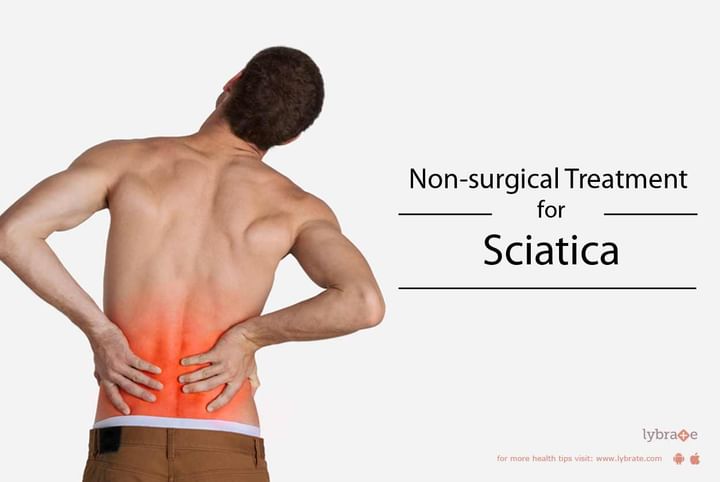Non-Surgical Treatment For Sciatica
The term Sciatica is used to describe leg pain, tingling, numbness or weakness that travels down the low back via the sciatic nerve to the back of leg. Sciatic nerve arises from each side of lower spine and passes deep in the buttock along the back of thigh and legs. The pain of Sciatica may be irregular/ infrequent or persistent causing severe agony to the patients. The pain of Sciatica may be confined to low back or hips or may extend up to toes. The pain of Sciatica can be excruciating and "not relieved by painkillers".
What causes Sciatica?
Pain in Sciatica is due to irritation or pinching of Sciatic nerve within the spine. This occurs most commonly due to prolapsed intervertebral disc (slip disc) causing nerve compression resulting in pain.
Is surgery the only treatment for Sciatica?
Most patients can be managed with medication/exercises. So surgery is not the only way out. Patients who have severe pain can also benefit from "Epidural Steroid Injection". This treatment has proven to be effective in avoiding spine surgery in such patients.
What is Epidural Steroid Injection?
Epidural Steroid Injection is a procedure done by a Specialist (Interventional Pain) in an Operation Theatre using X-Ray (Image Intensifier) to locate exact level of injection. A drug mixture consisting of Steroid with Local Anaesthetic is injected at the epidural space of affected nerve root. The steroid washes away inflammatory mediators from the epidural space which decreases the pain. Steroid also decreases the inflammatory response of body to the prolapsed disc. As a result the pain arising from nerve inflammation is decreased. This is a day care procedure i.e. the patients are discharged the same day.
How is the possibility of surgery ruled out?
Epidural Steroid Injection is a proven, safe and an effective treatment that works on the concept of Interventional pain management - to provide relief from persistent and chronic pain of Sciatica. Generally, a single injection is sufficient to relieve patients of the pain. The procedure can be repeated for a maximum 3 times in a year, depending on the patient's response. With effective pain relief, surgery is negated.



+1.svg)
